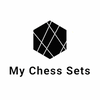Introduction to Chess and Checkers
Chess and checkers are two classic board games that are played on a similar 8x8 square board. They have been enjoyed around the world for centuries, offering different levels of strategic depth and player engagement. While both games involve two players taking turns to move pieces on a board, their rules, gameplay, and strategic complexity differ significantly.
The Origins and Basic Rules of Chess
Chess originated over 1500 years ago and has evolved into one of the most sophisticated strategy games in the world. The game is played with 16 pieces per player, each with its own type of movement. The king, queen, rooks, knights, bishops, and pawns all move differently, with the ultimate goal being to checkmate the opponent’s king, which means putting the king in a position to be captured ('check') from which there is no escape.
The Origins and Basic Rules of Checkers
Checkers, also known as draughts, is believed to have originated from the ancient game Alquerque and was adapted to the 8x8 chess board in the 12th century. Each player starts with 12 pieces, placed on only the dark squares of the board. The primary objective is to capture all of the opponent's pieces or block them so they cannot make a move. Pieces move diagonally and can jump over an opponent's piece to capture it. When a piece reaches the opposite side of the board, it is crowned a king, gaining the ability to move backward as well as forward.
Strategic Depth in Chess
Chess is considered a deep and complex game due to the variety in piece movement and the virtually infinite number of potential moves. Strategic themes in chess include controlling the center, piece development, king safety, and pawn structure, among others. Advanced strategies involve tactical maneuvers such as pins, forks, and skewers. The expansive depth of possibilities allows for a diverse range of styles and strategies, making each game potentially unique.
Chess Openings
Openings in chess are critical and often studied in detail. They set up the structure of the game and can dictate the pace and direction of play. There are numerous well-documented openings, like the Ruy Lopez or Sicilian Defense, each with sub-variations and extensive theory behind them.
Chess Endgames
Endgames in chess focus on the simplified position where only a few pieces remain. Mastery over endgames can provide a significant advantage, involving precise calculation and foresight. For example, understanding the critical techniques for different pawn and king endgames, or knowing how to use a bishop and knight to checkmate a lone king, can be game-deciding.
Strategic Depth in Checkers
Checkers, while generally simpler than chess, also involves considerable strategy, particularly in the opening and when it comes to positioning. Strategic play often revolves around controlling the central squares, structuring pieces defensively while seeking opportunities to create threats. One of the key strategic elements is deciding when to sacrifice a piece to gain a tactical advantage.
Checkers Openings
Like chess, checkers has documented openings, known as ballots, and a substantial amount of strategy focuses on controlling space and dictating the pace of the game. Experts in checkers employ various opening strategies aimed at either maintaining a solid defense or manipulating the opponent into a vulnerable position.
Checkers and Forced Captures
A unique aspect of checkers is the rule of mandatory captures. If a player can make a capture, they must do so, which can significantly affect the strategic landscape of the game. Failing to capture when required can even result in a penalty, in official settings.
Comparative Analysis and Cultural Significance
Both games have stood the test of time, providing insight into strategic thinking and decision-making. Chess is often portrayed as a game of intellectuals and has been used historically to signify strategic war-like thinking in literature and art. Meanwhile, checkers is seen as more accessible, often associated with casual play and broad appeal across various demographics.
Understanding the deeper strategic elements of both games enriches the playing experience and appreciation for the skills involved. Whether you lean towards the complex variety of chess or the straightforward fierceness of checkers, each game offers a rich field of strategic thought and endless opportunities for mental improvement.
Explore our large collection of luxurious chess sets!